3.3 PO processes
3.3 PO processes
The processes performed by a managerial type of PO revolve around three main themes:
-
Project life-cycle management;
-
Project portfolio management;
-
Support functions.
The most important of these, the one that provides the justification for a heavyweight PO like the one proposed here, is the second item, project portfolio management, shown at the center of Figure 3.5.[2] If the organization does not adhere to the portfolio concept or if the portfolio is small, then probably all that the organization needs is a "repository" or "coach" type of PO (see Section 1.3), with the rest of the responsibilities shared between senior management and line functions.

Figure 3.5: PO main processes.
In deciding which processes to include under the responsibility of the PO, there are two important criteria to consider: First, the PO should be accountable and have authority over those processes that clearly fall under its area of responsibility, such as portfolio and project management. Second, the PO should have responsibility over those processes that allow it to stay "in the loop." The justification for the second requirement is simple: In order to assure that the PO has the necessary power to exercise its authority effectively and that it is not bypassed when important decisions need to be made, the PO must have a hand in such processes as change management, vendor selection, career and professional development for project managers, and budgeting.
Although the PO must be given responsibility for the execution of these functions, the work to be performed is not limited to the PO staff. For example, formulating a project charter would require the involvement of personnel from the sponsoring organization as well as specialists borrowed from the different technical disciplines. This is necessary not only because the PO does not have all the technical resources needed to accomplish the task, but because such involvement helps foster consensus among the stakeholders. Another example is the portfolio planning process, where the PO manager acts as a convener and facilitator, with the final decisions taken by senior management in conjunction with the project sponsors.
3.3.1 Project life-cycle process
The project life-cycle process addresses the formulation, planning, execution termination, and review of individual projects (see Figure 3.6).

Figure 3.6: Project life cycel processes.
3.3.1.1 Project formulation
Upon receiving a request for a new project or a major change to an existing one, the PO conducts a preliminary study to establish its scope, work approach, duration, effort required, and other business aspects. The extent of the work to be performed at this point is limited to that necessary to make an informed decision with regards to whether or not to include the request in the portfolio mix (see Figure 3.7).

Figure 3.7: Project formulation process.
To support this activity, the PO will typically set up a multidisciplinary team with the participation of specialists from various departments and representatives of the sponsor. The main output of this activity is a project charter, which specifies the scope of work, the time frame in which the work is to be performed, the effort and other resources necessary for the execution, the major risks that could derail the project, and links to other projects in the portfolio. The project charter will be refined as work progresses. Contingency funds are evaluated at this time, with the purpose of minimizing costs by spreading the risks across all projects, much in the way that an insurance company will do with respect to its policyholders.
3.3.1.2 Project startup
The project core team is assembled. The project scope, the initial estimates, the assumptions, and the work approach proposed during the project formulation phase are revisited. Resource coverage is verified and necessary changes agreed to with the project sponsor. Changes that might have an impact on other projects are submitted for review and approval in the context of the master plan. The WBS is refined, work packages defined, and cost accounts set up. A performance baseline, against which performance will be measured, is established. Project staffing and work is then begun according to the project plan (see Figure 3.8).

Figure 3.8: Project startup process.
It is during this phase that the organizational project management method and other processes are adapted or tailored to the circumstances and needs of the project.
3.3.1.3 Project execution
It is at the project-execution stage (see Figure 3.9) that the actual project work gets done. The project-execution process brings together, into a temporary organization, the resources belonging to different line functions to work in a common endeavor, in accordance with the specifications contained in the project charter. The responsibility of the PO is exercised through the project manager, who is responsible for producing the desired results on time and within budget, for encouraging teamwork and commitment, and for ensuring that the processes, methods, and standards of the larger organization are adhered to.
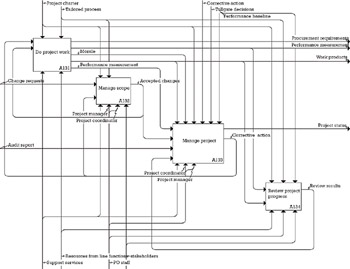
Figure 3.9: Project execution process.
3.3.1.4 Project closure
As the project draws to a close, the PO must ensure that all the work is completed, that the people finalizing their assignments are recognized for their contributions, and that the lessons learned are incorporated into the project-management processes.
The key activities at this stage are work completion, transferring ownership of the deliverables, closing contracts with subcontractors and suppliers, debriefing the project team, conducting a lessons-learned exercise, rewarding achievement, and disbanding the project team (see Figure 3.10).

Figure 3.10: Project closure process.
3.3.1.5 Project audit
A project audit is an in-depth evaluation of the "true and fair" state of a project conducted by a person not belonging to the project team. A project audit has as its purpose one or more of the following:
-
To ensure that the work is being performed in accordance with established procedures;
-
To establish the real condition of a project in terms of time, quality, cost, scope, customer satisfaction, and employee moral.
In order to gather data for the audit, the assessors will check work procedures, documentation, and deliverables; conduct interviews with customers, employees, and suppliers; and conduct a root-cause analysis. The findings of the audit are then documented in an audit report for management follow-up (see Figure 3.11).
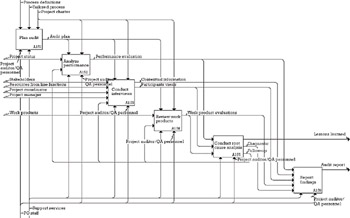
Figure 3.11: Project audit process.
3.3.1.6 Tollgate reviews
Tollgates are standard decision points in the life of the project. At each tollgate, a decision is made on whether to continue with the project, to kill it, or to change it in some significant way (see Figure 3.12).
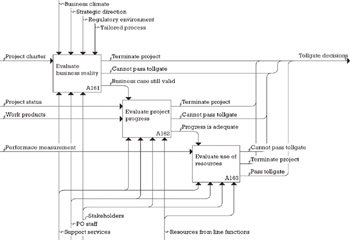
Figure 3.12: Tollgate process.
At each tollgate, a project will be reviewed from at least three different perspectives: business, progress, and cost. Representative questions are as follows: Are the justifications for this project still valid? Is the project making progress as expected? Are solutions appearing faster than problems, or vice versa? Are resources being used efficiently? What will be the cost at completion?
An effective tollgate process, one with the ability to discriminate between bad and good projects and a willingness to terminate the losers, is a key factor distinguishing "best-in-class" organizations from the rest.
3.3.2 Portfolio-management process
The portfolio-management process comprises portfolio planning, project oversight, and portfolio control (see Figure 3.13). The portfolio management process seeks to maximize the benefits that can be attained, with a given level of risk, from all of the projects currently undertaken by the organization and those envisioned for the years to come.
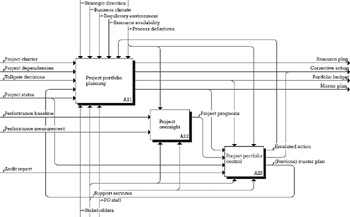
Figure 3.13: Portfolio-management process.
3.3.2.1 Project portfolio planning
Project portfolio planning is the point at which projects and business come together. The outcome of this process is a plan that balances work, results, resources, and risk according to the objectives of the organization. It involves deciding which projects to execute and when, forecasting the resources needed to execute the selected projects, and projecting the resulting cash flows.
The project-portfolio-planning process (see Figure 3.14) is performed at regular intervals, usually quarterly, or when special circumstances such as major deviations in individual projects, reorganizations, or new opportunities impose a revision of existing plans. At this level, projects are viewed as a single task. The selection and prioritization of projects is made with the objective of striking a balance between criteria such as the projects' strategic position, probability of technical success, probability of commercial success, sociopolitical and regulatory consequences, costs, rewards, stage of innovation, and resource constraints. Specific techniques for balancing the project portfolio will be dealt with in Chapter 6.
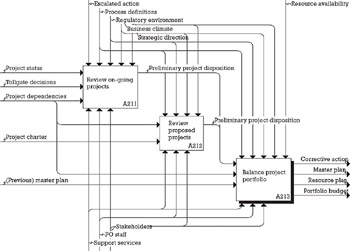
Figure 3.14: Project portfolio-planning process.
3.3.2.2 Project oversight
The purpose of project oversight is to provide early warnings about the performance of individual projects so that management can act before local issues spread to the entire portfolio.
To provide early warnings (see Figure 3.15), the project's performance must be assessed against its performance baseline and against the output of forecasting models built out of measurements collected from previous endeavors. The output of the process is a prognosis of the project's health, assessed by doing "checkups" on the following areas: progress, cost, quality, and staff morale. Specific quantitative techniques will be provided in detail in Chapter 7.
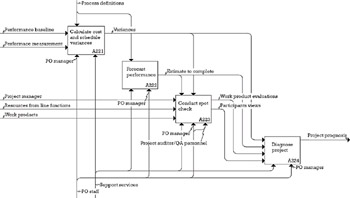
Figure 3.15: Project oversight process.
Quantitative oversight is not a substitute for, but a complement to, direct observation. The project manager and the PO manager must walk around to corroborate, in the field, whatever the indicators might be saying and to pick up signals overlooked by the current process.
3.3.2.3 Portfolio control
Portfolio control is the process by which the PO takes action to compensate or minimize the impact of project deviations over the entire portfolio.
Estimates are reviewed to ascertain that all projects will be completed in the allocated time frames, that resources will be freed on time, and that the impacts of cross-project delays are minimized. Appropriate corrective actions are decided in the context of the master and resource plans and not on the basis of the affected project alone (see Figure 3.16).
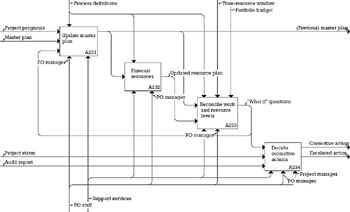
Figure 3.16: Portfolio control process.
The PO manager will take action by rebalancing the portfolio within the time-resource window defined for each project. Beyond those parameters, conflicts would need to be referred to senior management for resolution.
3.3.3 Support processes
The support processes provide the foundation on top of which all the other processes operate (see Figure 3.17). Despite their low visibility, these processes are an essential component of the PO. Furthermore, in the case of the PO as repository or coach, the support processes are the only processes specifically assigned to it.
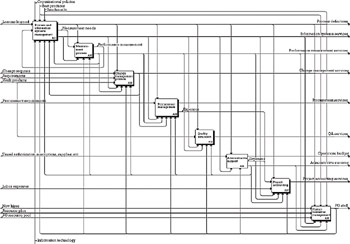
Figure 3.17: Support processes.
The importance of these processes resides in the fact that it is through them that the PO can ascertain project and activity progress without interfering with the project work. For example, by examining the activity logs of the configuration management system it is possible to determine the status of the work in process or the number of changes requested by a sponsor—of course, the system must first be designed to provide this information. Similarly, if the training and evaluation of project managers were not under the control of the PO, it would be very difficult for the PO manager to exercise authority over them.
There are eight fundamental support processes:
-
Processes and information systems management;
-
Measurement process;
-
Change management;
-
Procurement management;
-
Quality assurance;
-
Administrative support;
-
Project accounting;
-
Human-resources management.
3.3.3.1 Processes and information systems management
The success of the PO relies on the existence of common processes and tools. Without them, the system is unmanageable. But as important as the role that processes and tools play in developing a common vocabulary is their value as intellectual capital and as a source of competitive advantage. Processes and tools are the embodiment of the collective knowledge developed by the organization.
The notion of process improvement embraced here is based on the notion of bottlenecks [2]. Bottlenecks are activities or mechanisms that limit the throughput of systems along a given dimension: time to market, quality, and so on. Improvements in areas other than the bottleneck do not result in a performance increase at the system level. Of course, once we have removed a given constraint, a bottleneck will appear elsewhere and the process will be repeated. By focusing the improvement work where it really matters, not only do we reduce cost but we also minimize disturbance to the ongoing work, which in turn results in less variability. So by improving the improvement process we could achieve an improvement in the overall process.
Processes and tools are improved based on information coming from industry, academia, experience gained from the execution of projects, and from the insights of PO personnel (see Figure 3.18).

Figure 3.18: Process and information systems management.
3.3.3.2 Measurement process
The measurement process involves three activities (see Figure 3.19):
-
Planning the measurements;
-
Performing the measurements;
-
Producing performance statistics.
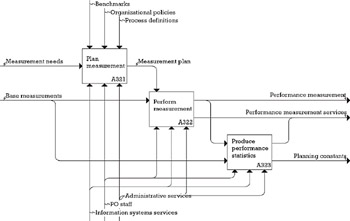
Figure 3.19: Measurement process.
A detailed explanation of this process is given in Chapter 7.
3.3.3.3 Change management process
Change and project work are inseparable. Change occurs naturally as part of the work that is done within the project, in response to changes in the business environment and to changes in the wishes and needs of the project sponsors.
Change management is a pervasive process that touches on every aspect of the project work. With respect to the project sponsor, it deals with changes to the project scope; within the project it deals with the evolution of the project's work products. Simply stated, the purpose of change management is to maintain in a congruent state plans, contracts, requirements, and specifications.
Change management involves three interrelated efforts (see Figure 3.20):
-
Requirements management: The purpose of the requirements management process is to manage the requirements of the project's products and product components and to identify inconsistencies between those requirements and the project's plans and work products. The management of requirements involves documenting requirements changes and rationales and maintaining bidirectional traceability between source requirements and all product and product-component requirements [3].
-
Configuration management (CM): The purpose of the CM process is to establish and maintain the integrity of project work products—including products that are delivered to the customer, designated internal work products, acquired products, tools, and other items that are used in creating and describing these work products—and of organization work products, such as standards, procedures, and reuse libraries. The CM process involves identifying the configuration of selected work products that compose the baselines at given points in time, controlling changes to configuration items, building or providing specifications to build work products from the configuration management system, maintaining the integrity of baselines, and providing accurate status and current configuration data to developers, end users, and customers [3].
-
Communications: The purpose of this effort is to ensure that all parties are informed of the disposition and consequences of proposed changes.
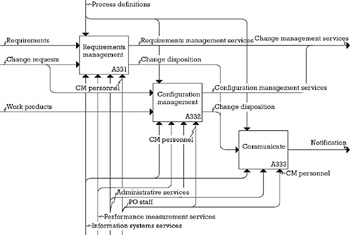
Figure 3.20: Change management process.
3.3.3.4 Procurement management
The purpose of this activity is to support project managers in dealing with third parties, vendors, and subcontractors involved in their projects.
Procurement management involves choosing the acquisition strategy, the selection of suppliers, the negotiation of contracts, and the tracking and auditing of third-party capabilities, performance, and results (see Figure 3.21).
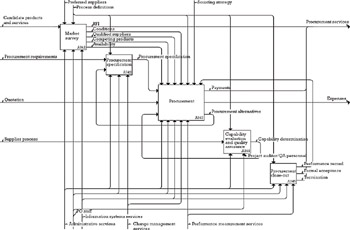
Figure 3.21: Procurement management process.
3.3.3.5 Quality assurance
The quality assurance (QA) process concerns the periodic check of work products and work processes employed by the projects and by the PO. Do we do what we say? Do we observe our own procedures? Do we keep the documentation up to date?
The QA process (see Figure 3.22) independently and objectively does the following:
-
Evaluates the quality of work products and ensure consistency with specifications;
-
Verifies that the work is performed according to the applicable process descriptions and standards;
-
Provides feedback to project staff and managers on the results of QA activities;
-
Follows up on noncompliances and ensures that all issues are addressed.
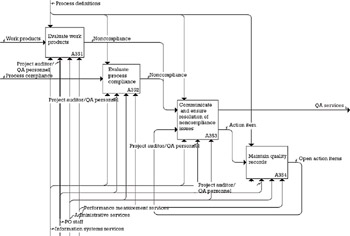
Figure 3.22: Quality assurance process.
3.3.3.6 Administrative support
This process concerns the administration of the internal PO work. Examples of this are requisition of personnel, travel arrangements, budget preparation, and filing and communication.
3.3.3.7 Project accounting
Project accounting is the process of analyzing, recording, and reporting on all of the financial events originated in a project (see Figure 3.23).
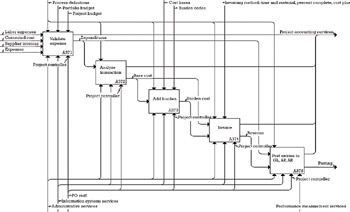
Figure 3.23: Project accounting process.
The project accounting process consists of the following activities:
-
Validation: Validation is not the same as approval. Approval refers to an authorization to spend given by the project manager or other responsible party, while validation is an action performed by the project controller or his delegate to verify that an expenditure conforms to organizational policies.
-
Transaction analysis: This is the process of deciding which account or accounts should be debited or credited and in what amounts. This is a critical activity for companies benefiting from tax credits, industrial benefits, or any other government incentive program.
-
Burden calculations: If applicable, a supplement called burden will be added to the base costs for invoicing purposes. Burden costs are calculated by multiplying a burden rate, which depends on the type of expenditure (e.g., labor, material), by the base cost.
-
Invoicing: This is the task of generating invoices billed to the project sponsor. The invoicing procedure will depend on the type of contract and the modality of payment agreed upon between the sponsor and the performing organization.
-
Posting: Posting is the process of recording changes in the ledger accounts exactly as specified in the journal entries.
An important but often neglected aspect of project accounting is the definition of account codes useful not only for financial reporting purposes but for managerial reporting as well. For example, time reporting data could be used to determine when a product platform is reaching the end of its useful life by comparing the relative cost of extending its capabilities over successive generations of new products [4]. Chapters 4 and 7 will address this point in greater detail.
3.3.3.8 Human-resources management
The PO is responsible for identifying, acquiring, and developing project management and project support personnel. In order to perform this function, the PO must prepare job descriptions and training programs, and work together with human resources in the establishment of appropriate career paths and rewards mechanisms (see Figure 3.24).
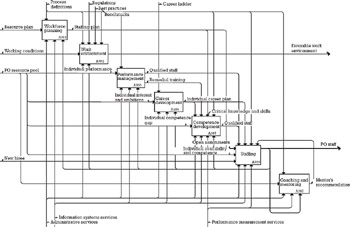
Figure 3.24: Human-resources management process.
The PO develops the competence of its personnel through job rotation, formal training, self-development, and mentoring and coaching programs.
[2]The PO processes have been described using IDEF0 notation. See Appendix A for an explanation of this notation.
EAN: 2147483647
Pages: 81
- Challenging the Unpredictable: Changeable Order Management Systems
- ERP System Acquisition: A Process Model and Results From an Austrian Survey
- Enterprise Application Integration: New Solutions for a Solved Problem or a Challenging Research Field?
- Distributed Data Warehouse for Geo-spatial Services
- Intrinsic and Contextual Data Quality: The Effect of Media and Personal Involvement